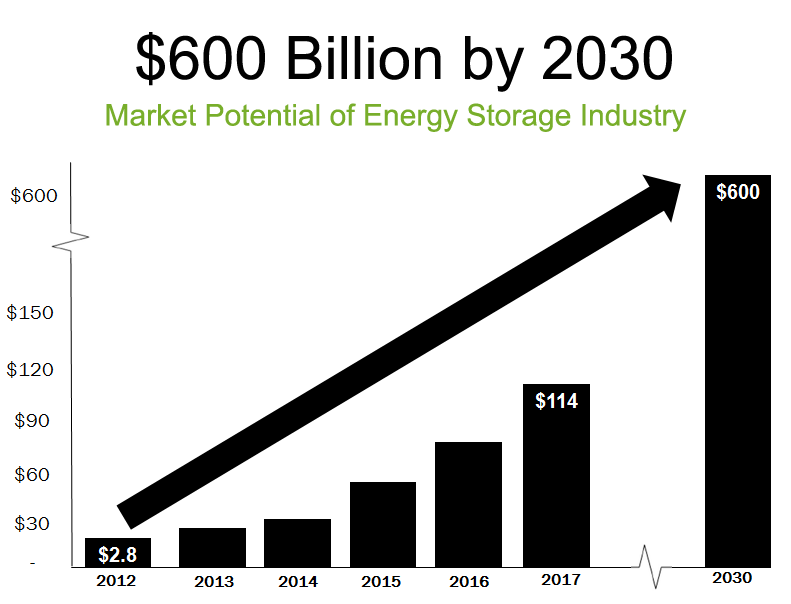
Click here for our Energy Storage Executive Summary
Types of Energy Storage Technologies Considered for Financing
- Batteries (Flow batteries, Lead Acid, Li-Ion):
- Electrical energy is stored for later use in chemical form. Existing battery technologies are being improved and new battery technologies are becoming available. Batteries (“groups”; from artillery guns) of cells are used separately or in a case containing several cells; a 12V car battery has six 2V cells inside the case. Various cell chemistries are used: Lead-acid; Nickel-cadmium; Lithium Nickel-metal hydride, Zinc-air
- Thermal Storage
- Air conditioners create ice at night, when power rates are low. The stored ice then runs a cooling system during the afternoon when power rates are highest.
- Flywheels
- Flywheels convert electrical energy to kinetic energy and then back again rapidly. Ideal for power conditioning and short-term storage.
- Compressed Air
- Electricity is used to compress air into storage tanks or a large underground cavern. The compressed air is used to spin turbines when electricity is needed.
- Pumped Hydro
- Excess electricity is used to pump water uphill into a reservoir. When power is needed, the water can run down through turbines, much like a traditional hydroelectric dam.
Energy Storage Configurations Considered for Financing
- Grid Scale
- Behind-the-Meter Commercial and Multi-family
- Community Scale
- Micro-grid
Energy Storage Applications Considered for Financing
- Peak-shaving – demand charge reduction
- Solar + Storage
- Ancillary and Wholesale Market participation
- Time-of-Use Arbitrage
- Back-up Services
- Other
Energy Storage Market Opportunity:

- Market Potential for Electric Energy Storage is estimated at $600 billion to address all applications that exist in 2014
- Energy Storage will grow over the next ten years to be the largest segment of renewable energy business, surpassing wind, solar and biomass, combined in CAPEX dollars and total GW capacity.
- AMR and Demand Pricing will bring Electric Storage to every customer and home in America when the amortized cost of storage is less than the differential price between off peak pricing and peak pricing, and arbitrage moves to the grid edge and inside the customer’s site.
Actual Customer Electric Bill. Demand Charges ($11,463) representing 40% of the total bill ($28,673).

Peak shaving using energy storage can save customers money by reducing their demand charges (both commodity and delivery).


